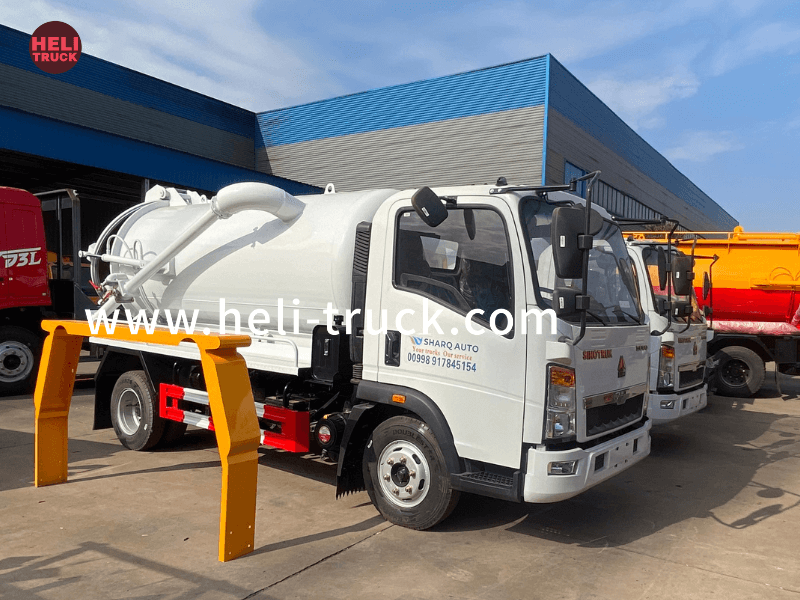Introduction
Garbage compactor trucks play a crucial role in municipal waste management systems, efficiently collecting and compacting solid waste to optimize transportation and disposal processes. Over the years, the design of these vehicles has evolved significantly to enhance functionality, safety, and sustainability. This article explores the history, components, and innovations in garbage compactor truck design, highlighting the importance of these vehicles in modern waste management practices.
History of Garbage Compactor Trucks
Garbage compactor trucks, also known as waste collection vehicles or refuse trucks, have a long history dating back to the early 20th century. The first compactor trucks were simple open-bed vehicles equipped with manual or hydraulic compactors to compress waste before transport to disposal sites. These early designs were rudimentary compared to modern compactor trucks but laid the foundation for future innovations in waste management technology.
As urban populations grew and waste generation increased, the demand for more efficient waste collection and disposal methods led to advancements in compactor truck design. In the mid-20th century, compactors became more sophisticated, with automated loading mechanisms and hydraulic systems that improved efficiency and worker safety. The evolution of compactor trucks continued as environmental concerns and regulations prompted the development of cleaner and more sustainable waste management solutions.
Components of Garbage Compactor Trucks
Modern garbage compactor trucks are complex machines that consist of several key components working together to collect, compact, and transport solid waste. Understanding work truck for sale of these components is essential to appreciate the efficiency and effectiveness of these vehicles in waste management operations. The primary components of a garbage compactor truck include:
1. Chassis: The chassis is the structural framework of the truck that provides the foundation for mounting the compactor body, engine, and other systems. It must be robust and durable to withstand the rigors of waste collection operations.
2. Compactor Body: The compactor body is the main structure of the truck that houses the waste collection and compaction mechanisms. It is typically equipped with a loading hopper, compaction blade, compaction chamber, and storage compartment for compacted waste.
3. Hydraulic System: The hydraulic system powers the compaction mechanism and other moving parts of the truck, such as the loading mechanism and tipping operation. It provides the force needed to compress waste efficiently and safely.

4. Control Panel: The control panel is the interface through which the operator controls the functions of the compactor truck, such as activating the compaction blade, adjusting compaction pressure, and monitoring system performance.
5. Collection Mechanism: The collection mechanism consists of a loading hopper and lifting arms that facilitate the loading of waste into the compactor body. It may be manual or automated, depending on the design and configuration of the truck.
6. Compaction Blade: The compaction blade is a crucial component that compresses the waste in the compaction chamber to maximize payload capacity and minimize the number of trips required for disposal. It is typically powered by the hydraulic system and moves back and forth to compact the waste effectively.
7. Storage Compartment: The storage compartment is where the compacted waste is stored before being transported to a disposal site. It must be securely sealed to prevent odors, leaks, and spillage during transit.
Innovations in Garbage Compactor Truck Design
Advancements in technology and engineering have driven significant innovations in garbage compactor truck design, resulting in more efficient, safer, and environmentally friendly waste collection vehicles. Some of the key innovations that have transformed compactor truck design in recent years include:
1. Automated Loading Systems: Automated loading systems have revolutionized waste collection operations by reducing manual labor, improving efficiency, and enhancing worker safety. These systems use robotic arms or lift mechanisms to lift and empty waste containers into the compactor body, minimizing the risk of injuries and increasing productivity.
2. Telematics and GPS Tracking: Telematics and GPS tracking systems have enabled fleet managers to monitor and optimize the performance of compactor trucks in real time. These technologies provide valuable data on route efficiency, fuel consumption, maintenance needs, and driver behavior, allowing for proactive fleet management and cost savings.
3. Alternative Fuel Options: In response to growing environmental concerns, many compactor truck manufacturers are offering alternative fuel options, such as compressed natural gas (CNG) and electric powertrains. These fuel-efficient and low-emission technologies help reduce greenhouse gas emissions and promote sustainability in waste management operations.
4. Safety Features: Safety is a top priority in compactor truck design, and manufacturers have introduced various safety features to protect operators, pedestrians, and other road users. These features may include backup cameras, proximity sensors, automatic braking systems, and anti-roll mechanisms to prevent accidents and injuries during waste collection activities.
5. Lightweight Materials: Lightweight materials, such as aluminum and high-strength steel alloys, are increasingly being used in compactor truck construction to reduce vehicle weight and improve fuel efficiency. Lighter trucks can carry larger payloads, resulting in fewer trips and lower operational costs for waste management companies.
6. Aerodynamic Design: Aerodynamic design elements, such as streamlined bodies, wind deflectors, and side skirts, are being incorporated into compactor trucks to reduce drag and improve fuel economy. By optimizing airflow around the vehicle, aerodynamic enhancements help enhance overall efficiency and reduce carbon emissions.
7. Smart Waste Management Systems: Smart waste management systems leverage sensor technology, data analytics, and cloud computing to optimize waste collection routes, schedules, and operations. These systems enable real-time monitoring of waste levels in bins, predictive maintenance of compactor trucks, and dynamic route planning to maximize efficiency and minimize environmental impact.
Conclusion
Garbage compactor trucks have come a long way since their humble beginnings, evolving into sophisticated machines that play a vital role in modern waste management systems. The design innovations discussed in this article have transformed compactor trucks into efficient, safe, and sustainable vehicles that help cities and municipalities manage waste effectively. As technology continues to advance and environmental awareness grows, the future of garbage compactor truck design looks promising, with a focus on maximizing efficiency and minimizing environmental impact in waste management operations.
